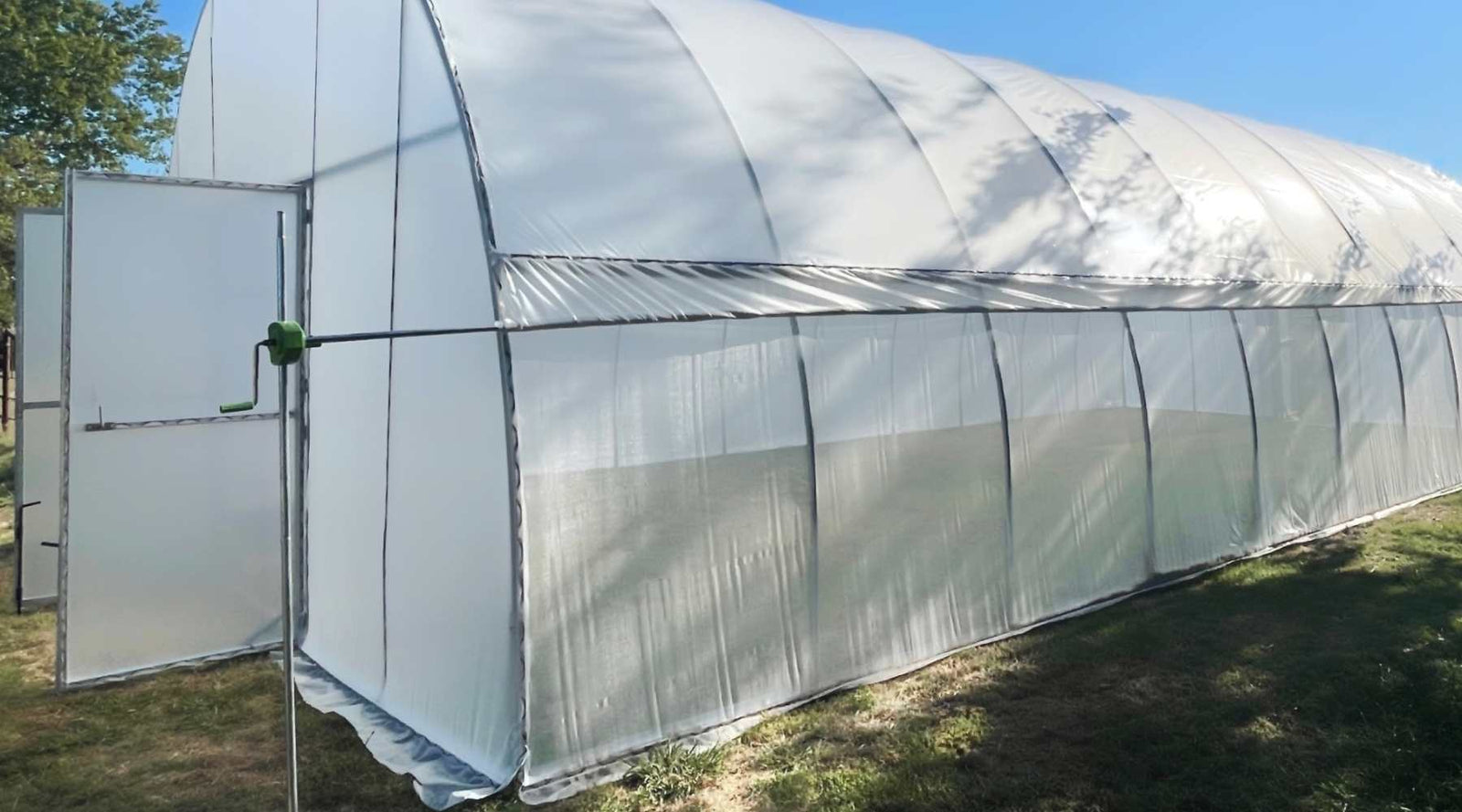Free Shipping on Orders over $75 to the Contiguous US
Free Shipping on Orders over $75 to the Contiguous US
Upgrades to a Caterpillar Tunnel or Hoop House
February 11, 2024 3 min read 0 Comments

WHAT ARE CATERPILLAR TUNNELS?
Caterpillar Tunnels are relatively inexpensive, temporary hoop houses that resemble the bug they are named for. 'Cat Tunnels' are designed to be structurally simple and low cost. For this reason, they lack many of the components that add to the rigidity of a structure, including endwalls.
UPGRADING A CATERPILLAR TUNNEL
Many of the same upgrades available for hoop houses can be modified to work for a caterpillar tunnel. Endwalls, Hip & baseboards, roll-up sides can be added along with purlins to replace the strap style bracing. With these adjustments, a caterpillar tunnel can be modified to increase durability and allow for a more permanent structure.
HOOP HOUSES Versus CATERPILLAR TUNNELS
Many farmers start with a caterpillar tunnel as a low-cost startup but later find they need more durability. The design of the caterpillar tunnel was made with the lowest cost in mind enabling it to be a quick return on the investment option.
Check out this article that goes into further depth about the differences between the two greenhouse structures.
UPGRADING A HOOP HOUSE
Options like roll-up sides, insect netting, shade cloth, inflated double layers of plastic, ventilation all help improve the growing environment for the plants and the comfort of the people working in the hoop house.
Deciding to invest in these options should be based on production planning, not an "I don't know what to do, so I'll buy it all" shotgun effect.
Upgrades need to come with the understanding that a hoop house is not typically an environmentally-controlled structure with no heaters or powered cooling units. It is not meant to be a four-season greenhouse.
COST V. BENEFIT OF HOOP HOUSE UPGRADES
A great example of this is deciding to add or not add a double-layer inflation kit. When new hoop house buyers often inquire about whether or not to add a double layer, the answer is variable.
When deciding if this upgrade is suitable for your farm, consider the R-value ( a material's resistance to thermal conduction) of a double-layer system. A double layer of greenhouse plastic hovers around 1.6, so the holding power of heat isn't the silver bullet some farmers are hoping for.
Next, it's important to determine if the cost of the second sheet of greenhouse plastic, a blower, the electricity needed to run the blower, the initial labor to install the double-layer and blower, plus the eventual reskinning of the greenhouse film is going to yield the returns needed to justify the cost.
Ask yourself if you will add passive heat like solar barrels, adding active heaters that you are feeding gas or wood, growing cold-sensitive plants like vine crops, and growing zone considerations like the length of available daylight.
If you live in a temperate grow zone and plan to grow cold-loving brassicas, you may not even need a second layer. Whereas the double poly upgrade would be great for those dealing with coastal winds or those wanting to get a head start on starts for spring.
If you plan on growing tomatoes in an unheated hoop house in Minnesota year-round, you will be very disappointed when the temp gets consistently below 65°, no matter if you have a second layer or not. It is all part of the checks and balances you need to think about when planning your farm.
OTHER HOOP HOUSE AND CATERPILLAR TUNNEL UPGRADES
Does your area have grasshoppers? You might benefit from insect netting. Insect netting has come a long way. New technology in insect netting has made it possible to deter insects without the use of harsh chemicals. Insect netting is easy to use, breathable, and can even be used to contain pollinators or beneficial insects that you wish to keep near your plants. Also check out Insect Netting for Pest Protection.
Are you in the southernmost states and get too much heat in the summer season? Roll-up sides and gable vents will keep your warm workers and your plants a little cooler. Roll-up sides are easy to install and use.
Understanding what a hoop house is designed to do, seasonal extension will make it easier to pick the best options for your farm. Remember, upgrades can be added later on to pin down your specific growing needs.
Subscribe
Sign up to get the latest on sales, new releases and more …
